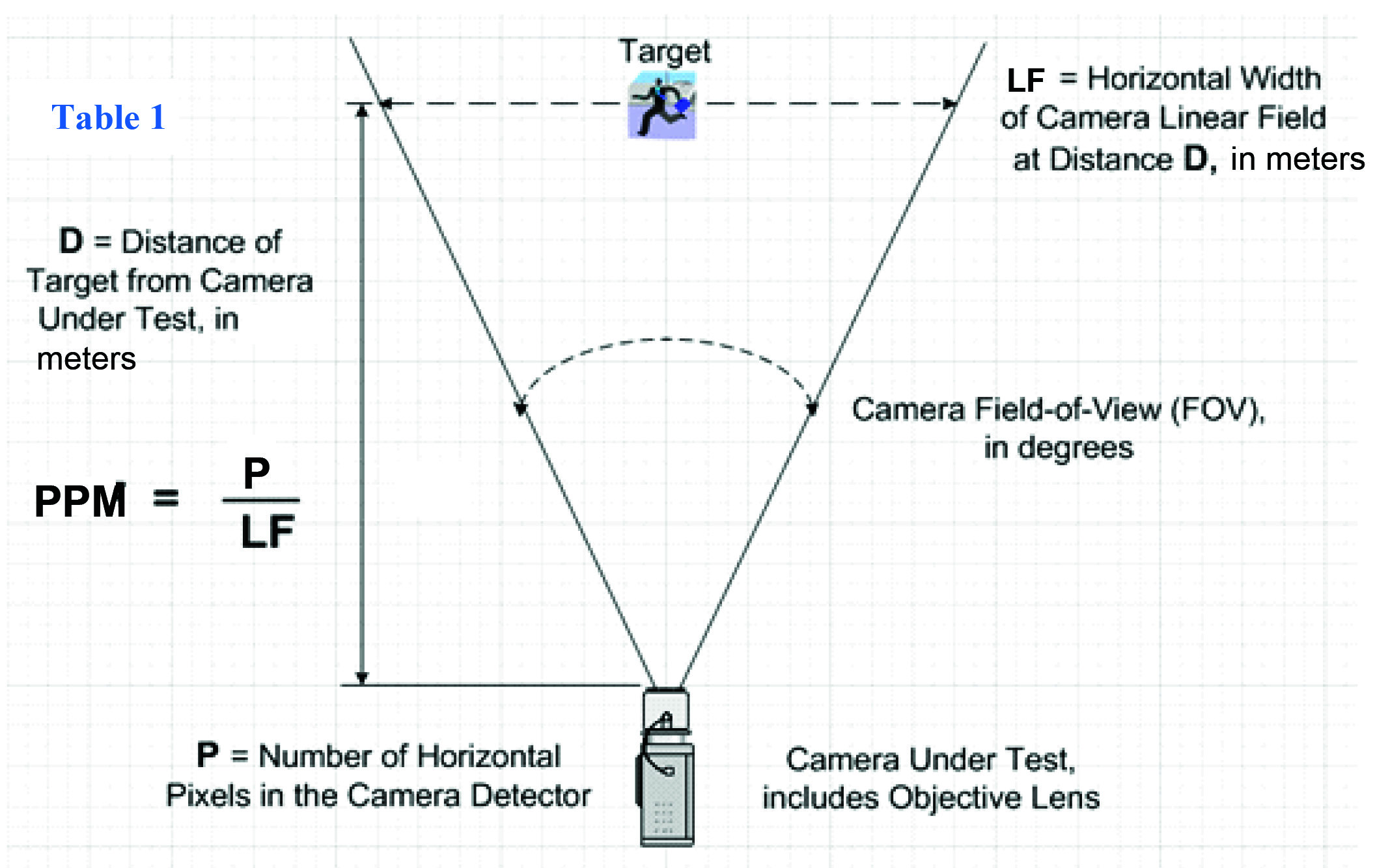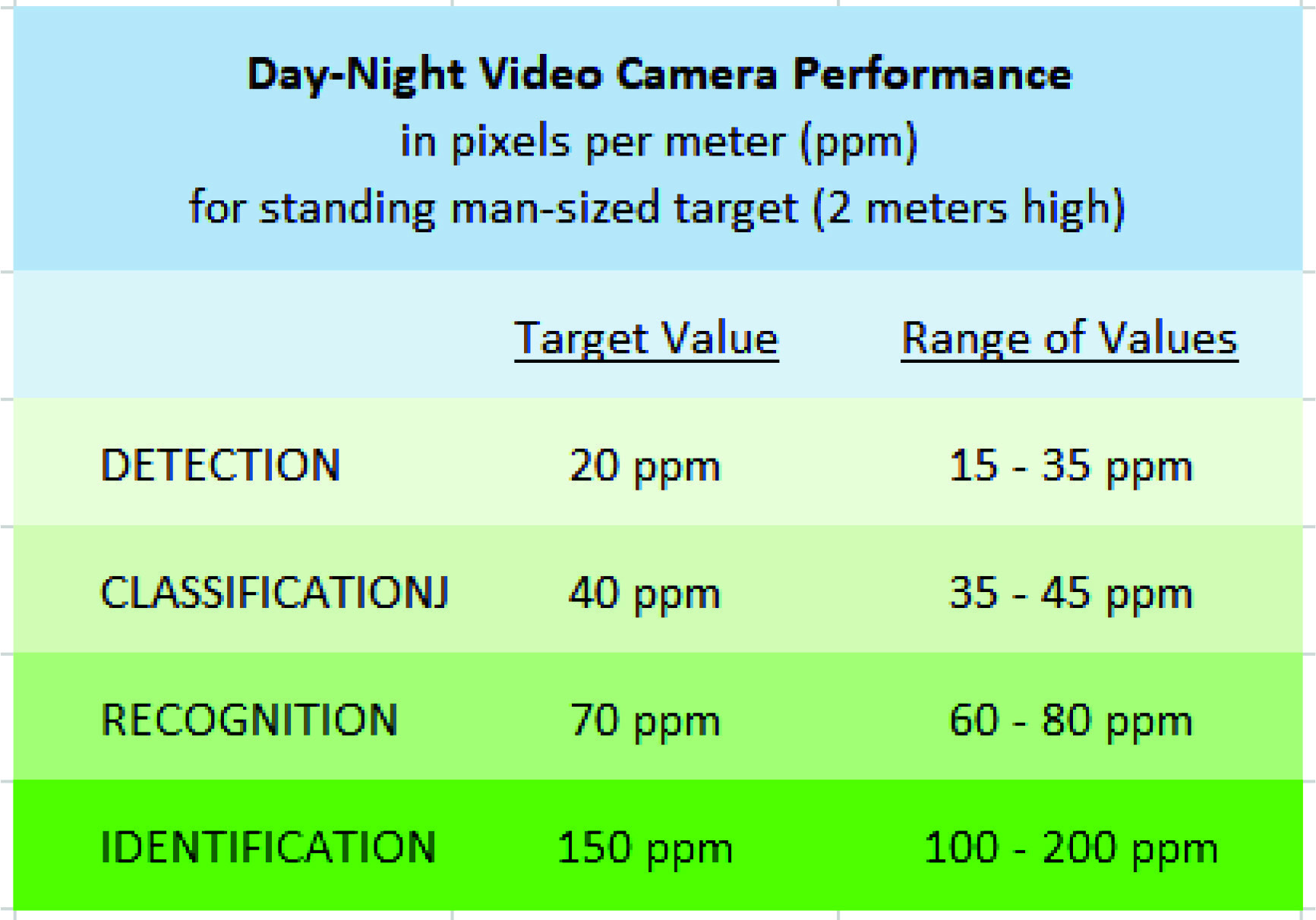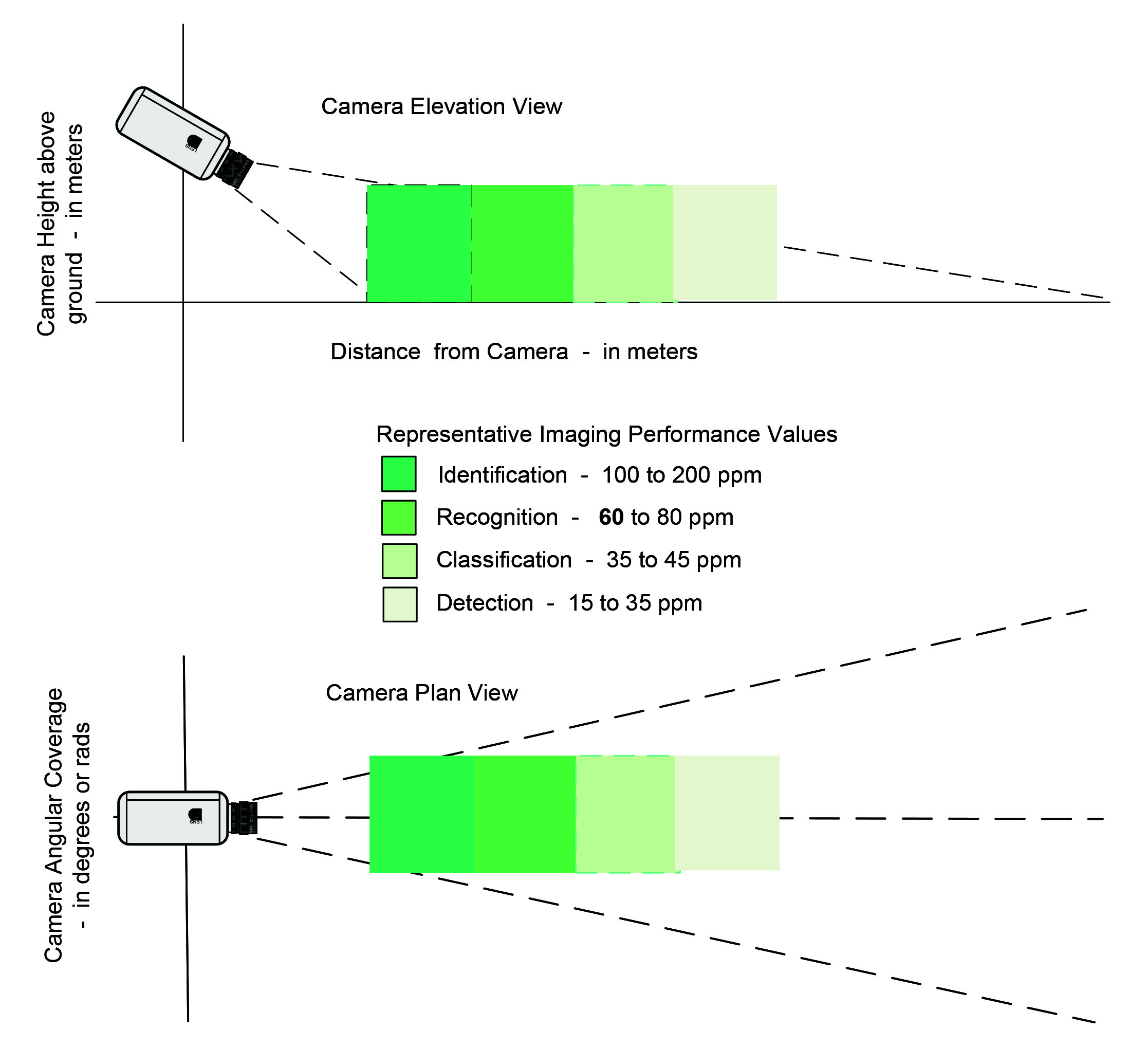
Milind Borkar – Expert Security Consultant
This article is the sequel to the article that came out in the October issue of SecurityLinkIndia. Here is a different way to describe similar information which is extremely useful to the tech guys in Air ports Authority of India (AAI). The specs below are based on Transport Security Administration (TSA) guidelines & requirements that are used in the aviation industry. These are A&E CSI-format Spec 28 23 00 that was prepared for the General Authority of Civil Aviation (GACA), Directorate General of Civil Aviation (DGCA), & General Civil Aviation Authority (GCAA). This will help AAI going forward.
Recap: An often-overlooked critical component in video surveillance systems is the lens. The security industry has moved steadily toward providing cameras with integrated lenses taking out the ‘guess work’ for integrators. Given the increased competitive pressures, it is understandable that cameras companies make trade-offs in lens performance to meet budgetary price targets for dome and bullet offerings. This can result in less-than-ideal solutions to specific imaging tasks.
Most camera companies still offer traditional box cameras that come without a lens or with the ability to remove the accompanying lens and replace it with a better, more tailored solution. Being able to select a compatible high-performance lens can ensure the investment in a high resolution system is not wasted.
1.CAMERAS
A.General
Provide material of types, sizes, capacities and electrical characteristics indicated. Except as otherwise indicated, provide manufacturer’s VSS components as indicated by their published product information, designed and constructed as recommended by manufacturer. The design intent is that all cameras, both fixed and PTZ, be provided from the same manufacturer for ease of servicing. The design intent is that all camera housings shall be provided from the same manufacturer so that a fixed dome housing will have the same look/ style as that of a PTZ housing.
Surveillance Requirements: The figures listed next page are indicative and are provided to assist the contractor in choosing the required resolution and field coverage of CCTV cameras at specific locations.
Metrics for the performance of each video camera are to be expressed by pixel density, expressed as pixels per meter (PPM), where ‘pixels’ is the number of horizontal camera detector pixels displayed across the scene being viewed at a specified distance from the camera. These relationships are shown in Figure 1 and values are shown in Table 1.
PPM metrics yield a range of performance values for targets at different distances in the field-of-view. These performance values decrease as the distance from camera to target increases.
PPM does not account for variations in site conditions, such as differences between day and night lighting; or target variables such as contrast and reflectivity; or the non-linear response characteristics of camera detectors.



The camera representation of an object should be as follows:
- For identification purposes: The image of the figure in the camera field of view target area should have a resolution of at least 400 pixels per meter (500 pixels per meter for challenging environments).
- For recognition purposes: The image of the figure in the camera field of view target area should have a resolution of at least 180 pixels per meter.
- For observation purposes: The image of the figure in the camera field of view target area should have a resolution of at least 80 pixels per meter.
- For detection purposes: The image of the figure in the camera field of view target area should have a resolution of at least 40 pixels per meter.
- For monitoring purposes: The image of the figure in the camera field of view target area should have a resolution of at least 16 pixels per meter.
B.2 Megapixel Interior-grade Fixed Cameras
Provide a 2 megapixel camera (1920 by 1080 resolution). This interior-grade camera system shall provide two simultaneous video streams, auto iris, and varifocal lens capabilities.
The network camera system shall possess the following primary characteristics:
- 264 High, Main or Base profiles; and MJPEG compression.
- Up to 3 megapixels.
- Dual streaming minimum (two independent IP video streams).
- Day/ night operation with IR cut filter.
- Wide Dynamic Range (WDR): 130dB.
- PoE (IEEE 802.3af, Class 3), 24V AC, 12V DC.
- 264 Smart Compression Technology.
- Multicast and unicast capable with unlimited H.264 viewers.
- Unicast capable with up to 20 simultaneous viewers.
- Local storage via SD/ SDHC/ SDXC.
- Audio input and output.
- Alarm input and output.
- . IP66 and IK10.
- 16 window blanks to conceal user-defined privacy areas that cannot be viewed by an operator.
- User and group settings to assign permissions and access levels to the camera. The camera shall provide local management where the camera manages the access levels or remote mode where the camera authenticates the user through a Lightweight Directory Access Protocol (LDAP) server.
- Support of server-based video analytics with the ability to provide hardware and software alarms based on the analytic behaviors.
C.2 Megapixel Exterior-grade Fixed Cameras
Provide a 2 megapixel camera (1920 by 1080 resolution), providing the interior-grade camera system that shall provide two simultaneous video streams, auto iris, and varifocal lens capabilities.
The network camera system shall possess the following primary characteristics:
- 264 High, Main or Base profiles; and MJPEG compression.
- Up to 3 megapixels.
- Dual streaming minimum (two independent IP video streams).
- Day/ night operation with IR cut filter.
- Wide Dynamic Range (WDR): 130dB.
- PoE (IEEE 802.3af, Class 3), 24V AC, 12V DC.
- 264 Smart Compression Technology.
- Multicast and unicast capable with unlimited H.264 viewers.
- Unicast capable with up to 20 simultaneous viewers.
- Local storage via SD/ SDHC/ SDXC.
- Audio input and output.
- Alarm input and output.
- IP66 and IK10.
- Autofocus options based upon a manual trigger, day/ night transition upon every 10-degree C temperature change, and once every 24 hours to ensure focus.
- 16 window blanks to conceal user-defined privacy areas that cannot be viewed by an operator.
- User and Group settings to assign permissions and access levels to the camera. The camera shall provide local management where the camera manages the access levels or remote mode where the camera authenticates the user through a Lightweight Directory Access Protocol (LDAP) server.
- Support of server-based video analytics with the ability to provide hardware and software alarms based on the analytic behaviors.
D.3 Megapixel Exterior-Grade Cameras
Provide a 3 megapixel camera (2048 by 1536 resolution), providing the following:
- The camera shall provide multiple simultaneous video streams, auto iris, and varifocal lens.
- The camera shall provide extended True Wide Dynamic Range (WDR), low-light performance, anti-bloom technology, 3D noise filtering, and enhanced tone mapping operating simultaneously.
The camera shall possess the following primary characteristics:
- 264 High, Main, or Baseline profiles; and MJPEG compression.
- Dual streaming minimum (two independent IP video streams).
- Day/ night operation with mechanical IR cut filter.
- True wide dynamic range (WDR): 130dB minimum.
- Electronic image stabilization (EIS).
- Anti-bloom technology.
- PoE (IEEE 802.3af, Class 3), 24V AC, 12V DC.
- 264 Smart Compression Technology.
- Multicast or unicast capable with unlimited H.264 viewers.
- Unicast capable with up to 20 simultaneous viewers.
- Local storage via micro SD card.
- Audio input and output.
- Alarm input and output.
- Support of server-based video analytics with the ability to provide hardware and software alarms based on the analytic behaviors.
E.5 Megapixel Interior-grade Fixed Cameras
Provide a 5 megapixel camera (2592 by 1944 resolution), providing two simultaneous video streams, auto iris, and varifocal lens capabilities.
The network camera system shall possess the following primary characteristics:
- 264 High or Main profiles; and MJPEG compression
- Up to 5 megapixels.
- Dual streaming (two independent IP video streams).
- Dual streaming minimum (two independent IP video streams).
- Wide Dynamic Range (WDR): 75dB minimum.
- PoE Class 2, 24V AC, 12V DC.
- 264 Smart Compression Technology.
- Multicast or unicast capable with unlimited H.264 viewers.
- Unicast capable with up to 20 simultaneous viewers
- Local storage via SD card.
- Audio input and output.
- Alarm input and output.
- Support of server-based video analytics with the ability to provide hardware and software alarms based on the analytic behaviors.
F.5 Megapixel Exterior-grade Fixed Cameras
Provide a 5 megapixel camera (2592 by 1944 resolution), providing two simultaneous video streams, auto iris, and varifocal lens capabilities.
The network camera system shall possess the following primary characteristics:
- 264 High or Main profiles; and MJPEG compression.
- Up to 5 megapixels.
- Dual streaming minimum (two independent IP video streams).
- Day/ night operation with IR cut filter.
- Wide Dynamic Range (WDR): 75dB minimum..
- PoE Class 2, 24V AC, 12V DC.
- 264 Smart Compression Technology.
- Multicast or unicast capable with unlimited H.264 viewers.
- Unicast capable with up to 20 simultaneous viewers.
- Local storage via SD card.
- Audio input and output.
- Alarm input and output.
- Support of server-based video analytics with the ability to provide hardware and software alarms based on the analytic behaviors.
G.2 Megapixel Interior-grade PTZ Cameras
The interior-grade PTZ camera shall consist of a receiver, enclosure, variable speed/ high speed pan and tilt drive unit with continuous 360° rotation; 1/2.8-inch high definition 1920x1080p resolution color/ black-white camera with an infrared cut filter, 30x optical zoom, 12x digital zoom, electronic image stabilization, and wide dynamic range.
The exterior-grade PTZ camera shall possess the following primary characteristics:
- Continuous 360° pan rotation up to 140°/ sec.
- 264 High, Main, Baseline profiles; and MJPEG compression.
- 0 megapixels.
- Dual streaming minimum (two independent IP video streams).
- Day/ night operation with IR cut filter.
- 12x digital zoom, 30x optical zoom.
- Automatic gain control.
- Wide Dynamic Range (WDR): 130dB minimum.
- Pan/ tilt and enclosure with Integrated Optics Package (IOP) or Pressurized Integrated Optics Cartridge (IOC).
- Electronic image stabilization H.264 viewers.
- Unicast capable with up to 20 simultaneous viewers.
- IP66 rated housing.
- Effective Projected Area: 243 inch^2 (with IR), 193 inch^ (without IR).
- 2 SFP Ports.
- Support of server-based video analytics with the ability to provide hardware and software alarms based on the analytic behaviors.
H.2 Megapixel Exterior-grade PTZ Cameras
The exterior-grade PTZ camera shall consist of a receiver, enclosure, variable speed/ high speed pan and tilt drive unit with continuous 360° rotation; 1/2.8- inch high definition 1920x1080p resolution color/ blackwhite camera with an infrared cut filter, 30x optical zoom, 12x digital zoom, electronic image stabilization, and wide dynamic range.
The exterior-grade PTZ camera shall possess the following primary characteristics:
- Continuous 360° pan rotation up to 140°/ sec.
- 264 High, Main, Baseline profiles; and MJPEG compression.
- 0 megapixels.
- Dual streaming minimum (two independent IP video streams).
- Day/ night operation with IR cut filter.
- 12x digital zoom, 30x optical zoom.
- Automatic gain control.
- Wide Dynamic Range (WDR): 130dB minimum.
- Pan/ tilt and enclosure with Integrated Optics Package (IOP) or Pressurized Integrated Optics Cartridge (IOC).
- Electronic image stabilization H.264 viewers.
- Unicast capable with up to 20 simultaneous viewers.
- IP66 rated housing.
- Effective Projected Area: 243 inch^2 (with IR), 193 inch^ (without IR).
- 2 SFP Ports.
- Support of server-based video analytics with the ability to provide hardware and software alarms based on the analytic behaviors.
I.2 Megapixel Exterior-grade LWIR PTZ Camera for Perimeter Intrusion Detection System
Refer to Section 281643 ‘Perimeter Intrusion Detection System’ for requirements.
2.Lenses
Provide vari-focal lenses for all fixed IP cameras. Field verify lensing requirements to provide for the defined desired angle of view, and high quality, glare-free, clear pictures at the video monitors.
All camera lenses shall incorporate C or CS mounts and shall be specifically designed for color applications. All camera lenses shall incorporate auto iris control.
3.Housings and Mounts
Housings shall be suitable for the camera selected, and shall meet the following minimum requirements:
- Interior-grade housings shall be aluminium with clear windows or domes.
- Exterior-grade housings shall be stainless steel with smoked windows or domes, and shall include builtin wipers and sun-shields.
- Acceptable housings for fixed cameras shall include dome-type, bullet-type, and box-type.
- PTZ cameras shall include an integrated Pan-TiltZoom unit.
- Housing and mount colors shall be coordinated with the employer for approval in advance of procurement.
- All housings shall be vandal-proof.
Fixed camera mountings shall provide manual three-axis adjustment to optimize views.
All camera mounting hardware, including mounts, mounting plates, stands, stanchions, pendants, arms, hardware and ancillary equipment shall be the product of the camera manufacturer, or approved for use by the selected camera manufacturer for the camera types and models, as provided for this project.
Exterior mounting equipment and associated hardware shall be stainless steel. Interior mounting hardware shall be aluminum, with a color coating to match the camera housing provided.
4.Environmental Requirements Cameras
shall meet the following requirements:
a.Operating Temperature:
- Interior: -10 to +50 degrees C .
- Exterior: -10 to +55 degrees C.
b.Exterior-grade cameras shall be suitable for operations inn environment that includes exposure to sand, grit, dust, and electrostatic discharge.
5.Media Converters
- Media converters shall be used for cameras in areas where direct copper connectivity is not feasible.
- Media converters shall be provided by the Contractor in coordination with the Structured Cabling Network.
*Views expressed in the article are solely of the Author